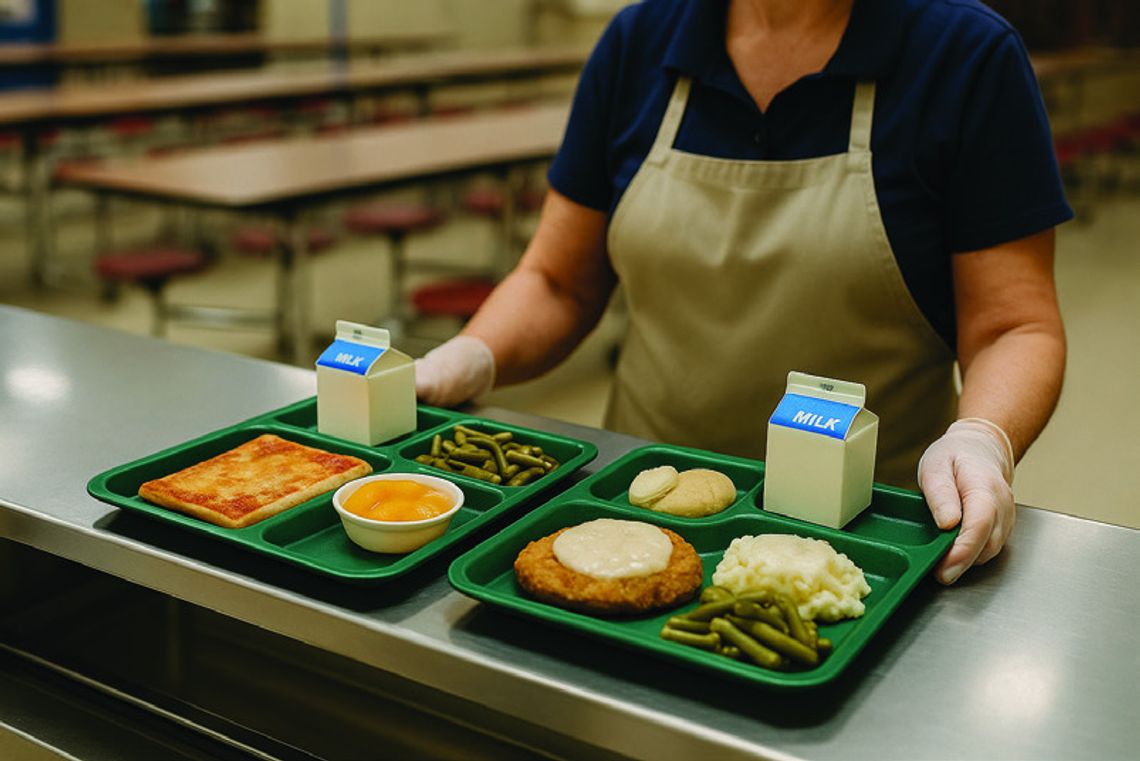In a year marked by budget fights, SNAP cuts, and political tension over who gets to eat and who’s left out, one new policy has caught almost everyone off guard: starting next fall, every public school student in Oklahoma will get free breakfast and lunch.
The Oklahoma State Department of Education confirmed this weekend that the 2025–2026 school year will usher in universal school meals statewide, regardless of household income. The funding will come from a mix of federal USDA reimbursements and state budget reallocations—with no new taxes and no new applications required.
The announcement comes from State Superintendent Ryan Walters, a lightning rod in Oklahoma politics, and was posted with little warning on the department’s social media. But the change appears real, sweeping, and already in motion.
HOW DID WE GET HERE—AND WHY DOES IT MATTER?
For years, school meals have been a lifeline for countless Oklahoma families. But the full extent of food insecurity really came into focus during the pandemic, when schools switched to curbside meal pickups and it became clear that cafeteria trays weren’t just about lunch—they were about survival for a lot of kids, in every zip code. It wasn’t just an “urban” problem. In rural towns across Western Oklahoma, grocery prices kept climbing, and some families found themselves driving long distances just to find basic staples. Anyone who’s worked in a school or packed a lunchbox knows the unspoken stress that comes with trying to “fit in” at the lunch table. As much as we celebrate individuality, most kids just want to feel like they belong. That’s not easy when some have hot lunches and others are opening up a sack lunch with little more than a half sandwich and a bag of chips. Schools have struggled for years with unpaid balances, paperwork headaches, and the awkward reality of “lunch shaming”—kids singled out for something completely beyond their control.
Over the last few years, federal safety net programs like SNAP (Supplemental Nutrition Assistance Program, formerly “food stamps”) have been tightened and pandemic- era nutrition supports have rolled back. Oklahoma families have had to brace for the worst, never quite sure if help would come in time.
All of this set the stage for a new push: make sure every kid in every public school gets a meal, no questions asked. No paperwork, no shaming, no one left out. The solution: blend federal nutrition funds (which Oklahoma already qualifies for under the National School Lunch Program) with state education dollars, using a budget reallocation that prioritizes food as a basic right.
This isn’t just about feeding kids. It’s about dignity, equality, and the peace of mind that comes with knowing nobody’s going hungry at the lunch table.
HOW DOES OKLAHOMA COMPARE TO OTHER STATES?
By approving this universal meal policy, Oklahoma joins a small but growing group of states—including California, Colorado, and Maine—that have rolled out similar programs in the past few years. What’s especially interesting is that even states with far bigger budgets have had to wrestle with the logistics of making school meals accessible for all. In California, despite all its wealth, school districts have faced budget headaches and rising food costs, sometimes scrambling to make the numbers work.
Oklahoma’s strategy—combining federal reimbursements with existing state funds, rather than introducing new taxes or expensive bureaucracy—might end up being more stable in the long run. Lawmakers say this approach was inspired by both a need to address rising hunger and a desire for greater transparency and accountability in education funding, all bundled into what some have nicknamed the “big beautiful bill.”
WHAT THIS MEANS LOCALLY For school districts across Beckham County—Sayre, Erick, Elk City, Merritt, and Sweetwater—this change is a big deal. Some schools already qualify for the Community Eligibility Provision, which lets high-poverty campuses offer free meals to everyone. But starting in 2025, every public school kid in the state, regardless of where they live or how much their family earns, will be guaranteed breakfast and lunch.
No more income verification. No collection letters for unpaid balances. And for administrators and lunchroom staff, a welcome relief from the daily grind of sorting out who owes what.
Districts will need to show they can operate under the new reimbursement model. If a local budget falls short, the state has pledged to help find solutions—reshuffling funds as needed so that food remains a priority. Until the new program launches, families should expect business as usual: income-based applications, some full-price meals, and the familiar paperwork routine.
THE BOTTOM LINE
In a time when groceries are expensive, options are limited, and more families are stretched thin, this decision stands out for its simplicity and its impact. For the first time, every Oklahoma public school student will be able to sit down to a meal with their classmates—no questions asked, no strings attached.
For Western Oklahoma, where school cafeterias often serve as the day’s most reliable meal, this isn’t just a policy shift. It’s a promise that every kid gets a fair shot. That’s something we can all get behind.
Have questions about your district? Contact your school office or visit the Oklahoma State Department of Education website for updates.



